Contents
Improvements in New & Existing Cement Grinding Mills by Tim Nowack
CLICK HERE NOW TO DOWNLOAD MOST IMPORTANT BOOKS IN CEMENT INDUSTRY + PRACTICAL EXCEL SHEETS TO HELP YOU IN YOUR DAILY WORK
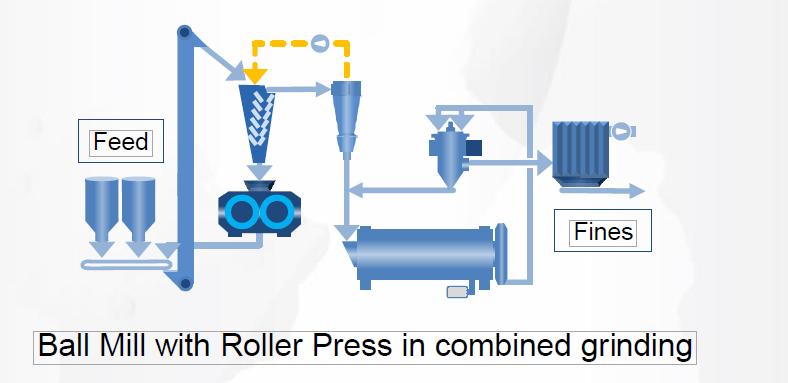
1. Introduction
2. Types of cement mills in use today
3. Factors affecting ball mill performance
4. Ball mill improvements & case examples
5. Conclusions & question time
Introduction
Cement manufacture is energy intensive
o Cement manufacture consumes typically 3,100 – 3,400 MJ of fuel/t clinker & 90 -130 kWh / t cement in a modern plant, & more for older or less efficient plants;
o Generally 2/3 of the electricity consumed is used in the grinding of raw materials, fuels & finished cement;
o Finished grinding may consume 25 – 50 kWh/t cement, depending on the feed material grindability, additives used, plant design & especially the required cement fineness.
Cement grinding is the single biggest consumer of electricity in the manufacturing process.
Whichever the mill types, grinding is inherently inefficient

o < 20% of energy absorbed is reckoned to be converted to useful grinding: the bulk is lost as heat, noise, equipment wear & vibration;
o For ball mills, only 3 – 6% of absorbed energy is utilized in surface production, the heat generated can increase mill temperature to > 120⁰ C & causes excessive gypsum dehydration & media coating if mill ventilation is poor.
Types of cement mills
There are basically 4 types of cement mills in use today:
Ball Mill (BM)
Ball Mill (BM): predominant despite higher energy consumption partly because of historical reason but partly also because it still offers considerable advantages over other mills, often operate with roller press for pregrinding or in combined grinding;
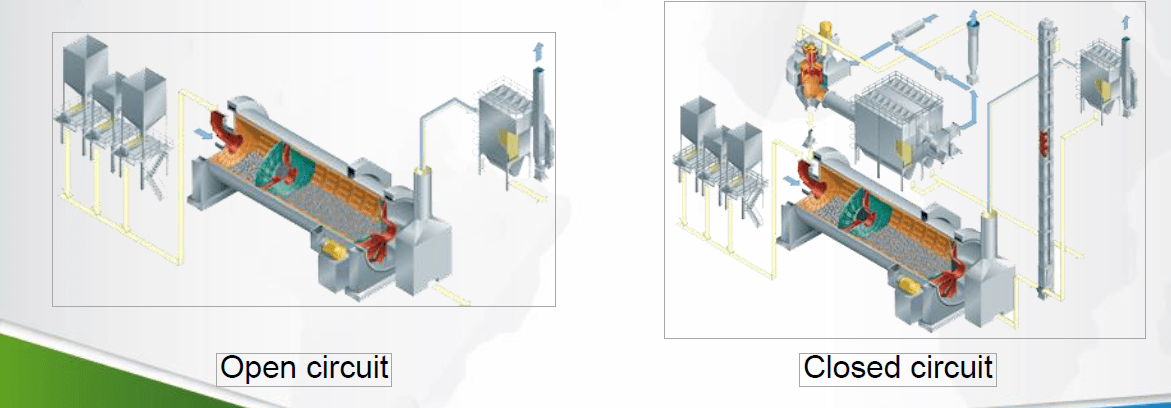
Vertical Roller Mill (VRM)
Vertical Roller Mill (VRM): gained popularity in last decade due to lower energy consumption & higher capacity, relatively few plants in service;
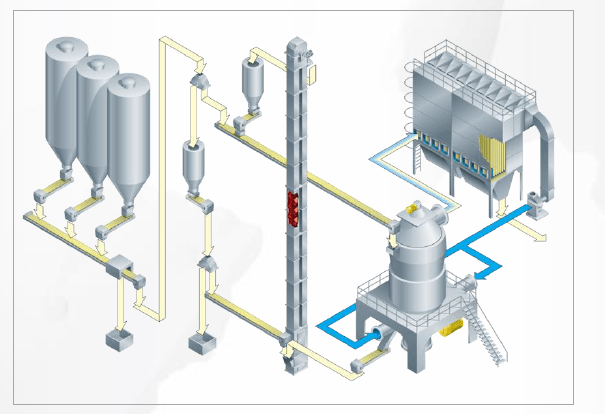
Roller Press (RP):
Roller Press (RP): also a more recent choice especially after the advent of the V-separator & improved roller life, offers the lowest energy consumption but even few plants in service;
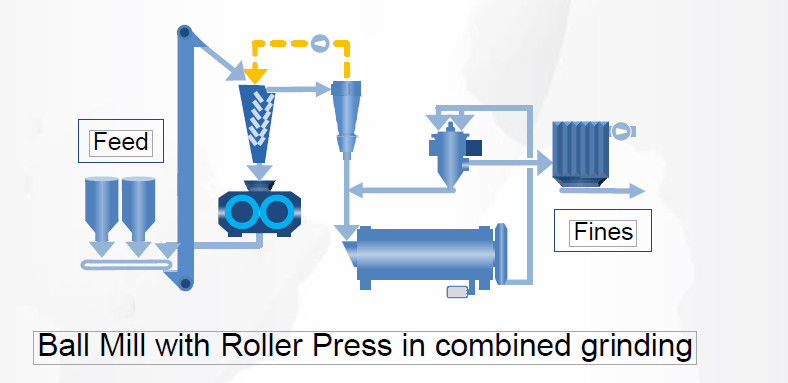
Horizontal Mill (HM)
Horizontal Mill (HM): also very few in service & found mainly in companies related to the mill developer.
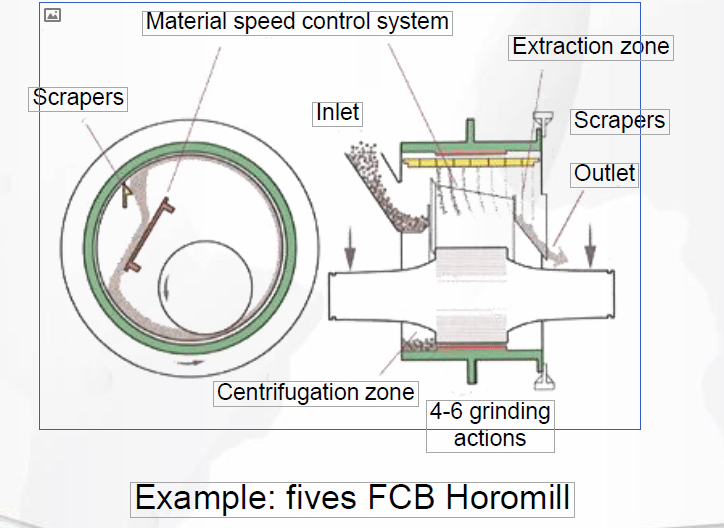
Comparison of specific energy consumption
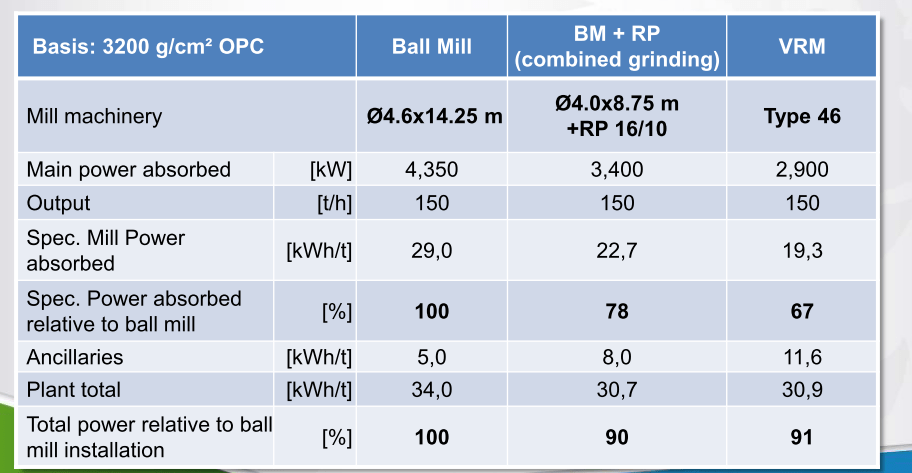
Factors affecting TCO of a new cement mill
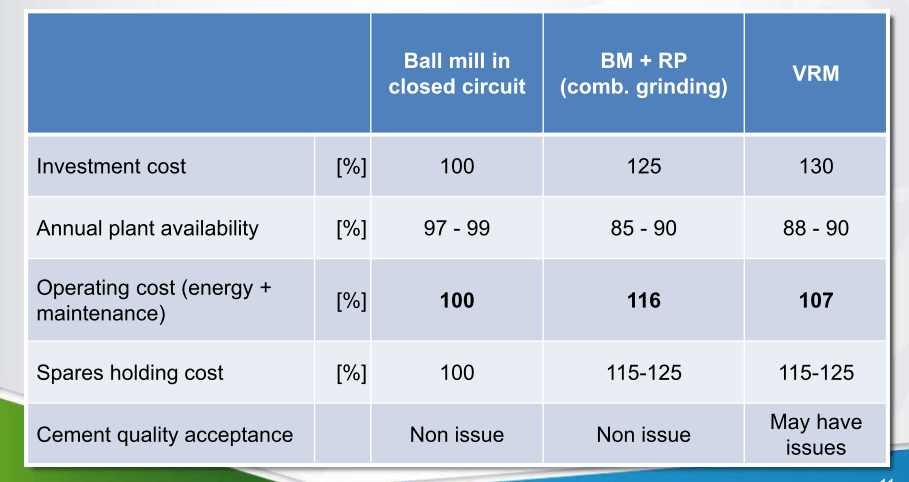
Consider all investment key aspects!
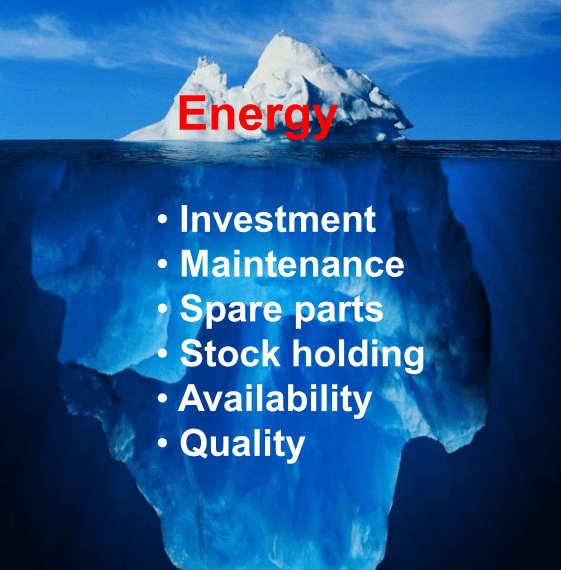
Ball mill in closed circuit has the
lowest investment
lowest operating cost
lowest maintenance cost
highest availability
highest cement quality acceptance!
Factors affecting ball mills
Basically 6 key factors affecting mill performance:
o Feed characteristic (grindability, psd, moisture, etc.);
o Cement fineness;
o Equipment design & plant engineering;
o Operations & maintenance;
o Use of clinker extenders (Additives);
o Use of grinding aids (Admixtures).
Effect of feed moisture on grindability
Empirical “rule-of-thumb”:
o Every 1% increase in moisture content above 0.5% increases energy consumption by >10%, especially at higher product fineness
o At moisture above 3 – 4%, a ball mill without drying chamber may not be operable
Use of synthetic / waste gypsum or additives can increase the total feed moisture & adversely affect the mill performance if not properly managed.
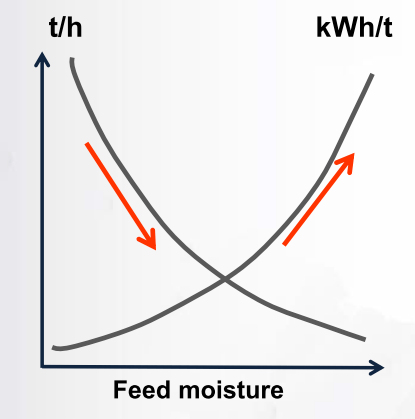
Cement fineness vs. grindability
Grindability of a 95/5 OPC at various Blaine fineness:
o 27-32 kWh/t at 3,000 cm²/g
o 39-47 kWh/t at 4,000 cm²/g
o 58-69 kWh/t at 5,000 cm²/g
Every 100 cm²/g increase in cement fineness increases the mill power consumption by 1-2 kWh/t for a closed circuit mill & 2-3 kWh/t for an open circuit mill, a sheer waste if this is not required by the market!
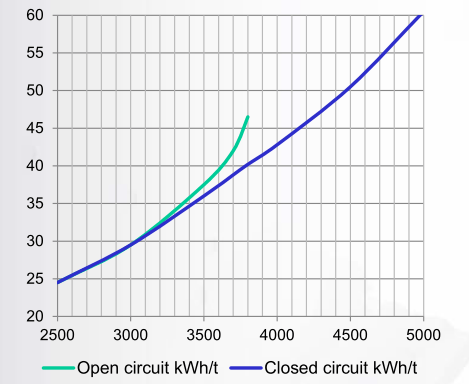
Equipment design:
Ball mill & mill internals
o Ball mill (L/D, speed, drives & reducers, etc.)
o Ventilation
o Liners
o Diaphragms
o Media composition & fill ratio
Ball mill typically accounts for 85% of the total energy consumed in the grinding plant & should be the focus of improvements.
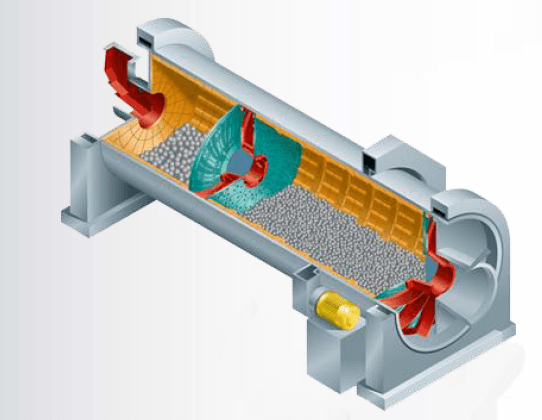
Equipment design:
Separators
o Material dispersion
o Air distribution
o Principle of separation
o Adjustability
o Regularity
o Efficiency
CPB QDK Next Generation high efficiency separator has a very low by-pass & can improve mill output / energy consumption by 20 – 25%!
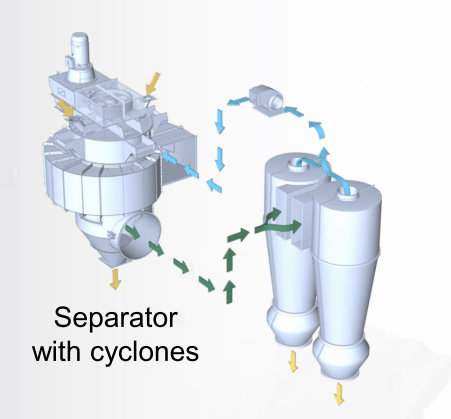
Equipment design:
Separators
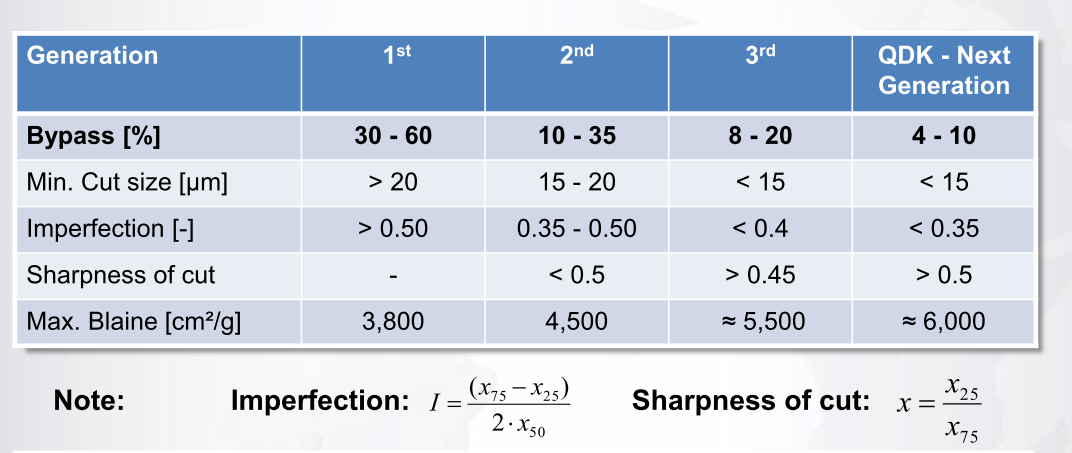
CPB QDK Next Generation high efficiency separator has a very low by-pass & can improve mill output / energy consumption by 20 – 25%!
Plant layout & engineering
o Plant lay-out has an important impact on efficient operations & maintenance, as well as energy consumption;
o Choice of ancillary equipment such as material transport & electrical control systems including dampers, feed rates, etc, also affect the mill efficiency & energy consumption
“Minimum Design Approach” coupled with process expertise & good engineering can reduce energy consumption by 10 – 15%!
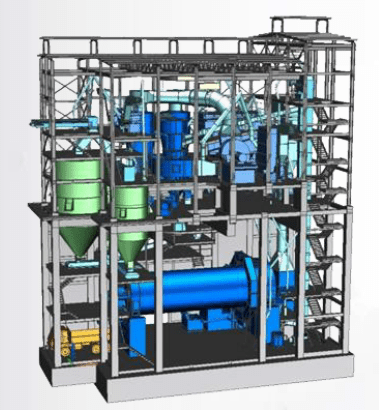
Operations & maintenance
o Training: over-grinding / under-feeding is wasteful of energy, hence skills & motivation of plant operatives can impact performance;
o Mill ventilation: high mill temperature causes media coating & excessive gypsum dehydration & can affect both output & quality;
o Maintenance: frequency & quality of planned maintenance can improve plant availability & mill performance;
o Feed variability: early detection of changes in quarry, kiln or cooler affecting clinker grindability ensures early corrective actions;
o Technical audit: regular axial & circuit analysis, including adjustment of media composition & filling ratio ensures optimum operation.
Difference between good & poor mill operation & maintenance can results in performance variation of +/-10%, or more in some cases!
Use of clinker extenders:
Additives
o Additives such as limestone, slag, fly-ash & pozzolana for clinker substitution can reduce the total energy consumption of cement manufacture by 50%;
o However, excessively wet additives, or difficult to grind materials can impact the mill performance negatively.
Additives are highly effective in reducing the overall energy consumption & CO2 emission of cement production due to clinker substitution!
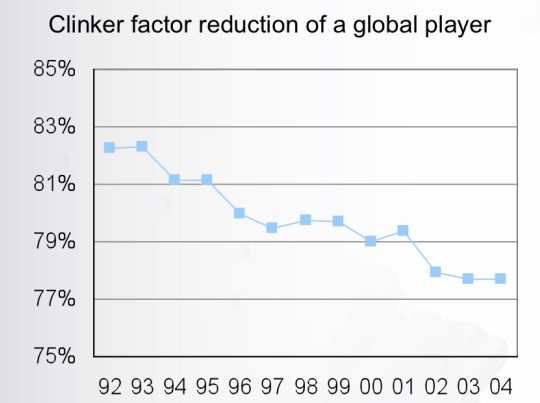
Use of grinding aids:
Admixtures
o Amine, glycol & increasingly polycarboxylate polymer (PCE) based grinding aids can improve grinding efficiency at low dosage rate of 0.02 –0.05% by neutralizing the electrical charges formed on the surfaces & cracks of particles to reduce agglomeration and coating formation on media & liners
o At higher dosage (> 0.2% by weight), early strength may be affected.
Output may increase by 5 – 10% for normal OPC, or more for finer cement.
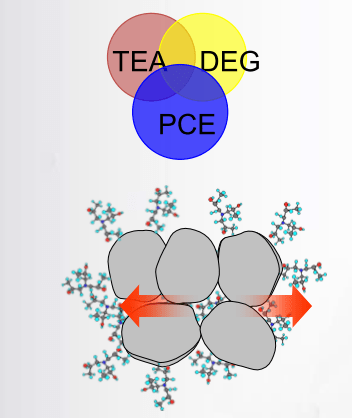
Ball mill improvements
Plant & equipment design
o State-of-the-art ball mill
o Mill linings
o Mill diaphragms
o Grinding media
o Separator
State-of-the-art ball mill
o Lateral drive & self-aligning slide shoe bearings;
o Integrated lubrication cooling;
o Large, standard size man-hole;
o Activator & classifying liners;
o Monobloc® low pressure drop flow control intermediate diaphragm;
o High efficiency separator;
o Efficient layout & system protection.
Europe’s largest ball mill supplied by CPB for Heidelberger Cement in Poland
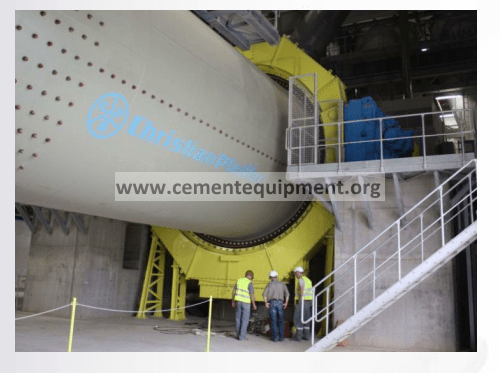
Mill shell lining design for optimum grinding actions
1st compartment: “Cataracting”
Media optimally lifted to achieve maximize impact / compressive forces for coarse grinding without causing liners breakage.
2nd compartment: “Cascading”
Media sufficiently activated to maximize shearing & compressive forces for fine grinding, good material distribution & flowability.
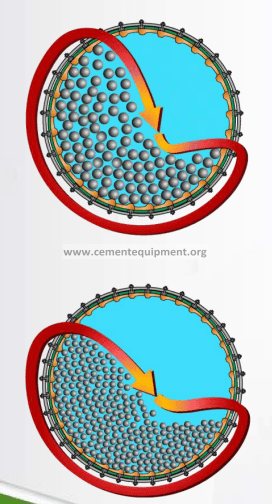
Maintaining grinding efficiency over liners service life
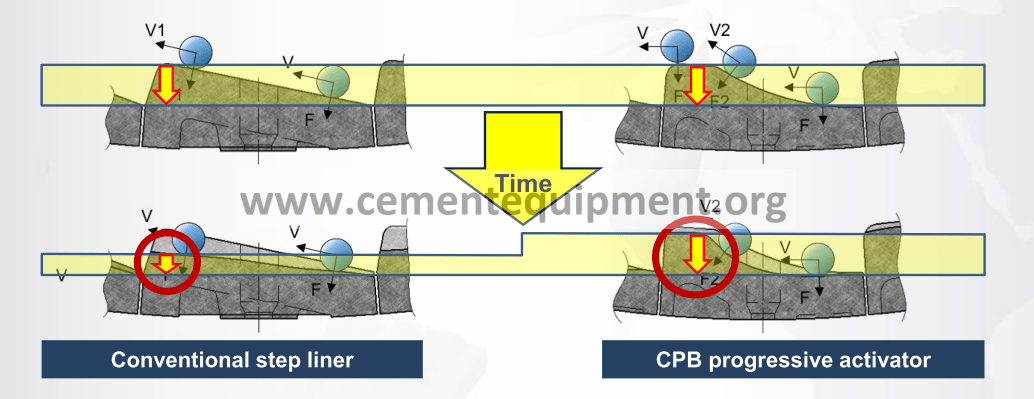
Liner wear-rates are governed by the profile, incorrect design can reduce the effective lifting height over time & grinding efficiency in the 1st compartment.
Low ΔP flow-control diaphragms to improve grinding

o CPB monobloc® diaphragm is highly robust & has a long service life;
o Large central opening & low ΔP maximizes mill ventilation;
o Flow control optimizes material levels to maximize grinding efficiency;
o Heat-treated, rolled steel slotted plates do not peen over & require almost no maintenance;
o Output/power can be improved by 5-7% & cement quality more consistent.
Media filling ratio according to required production
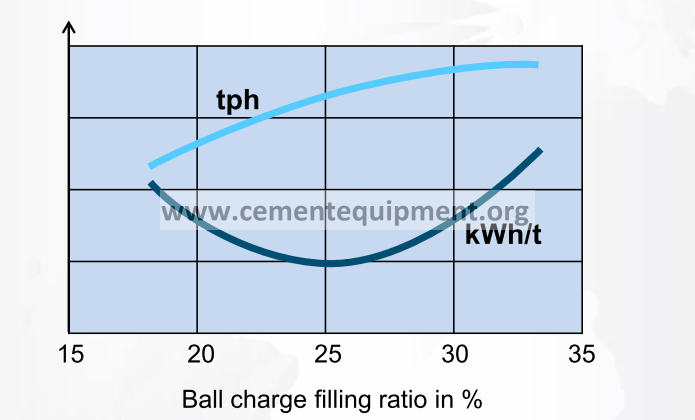
Lowest grinding energy is achieved at a filling ratio of 24-26%; hence opportunity to reduce energy consumption if output is not needed.
High efficiency separator to minimize over-grinding
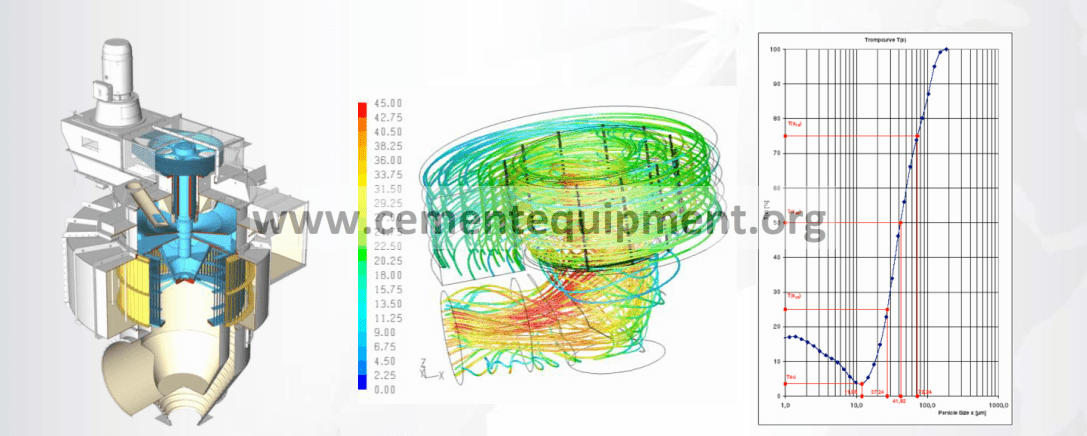
Latest QDK high efficiency separators from CPB can achieve a bypass of <10% & improve an existing mill performance by 20% or more, as well as producing greater cement consistency.
Case Example 1 Plant name (Country) Cement mill type Scope of modifications
Diaphragm replacement (2011)
Lafarge (Austria)
2 compartment closed circuit mill, Ø 4,6 x 14,4 m Installation of new Flow Control Intermediate Diaphragm
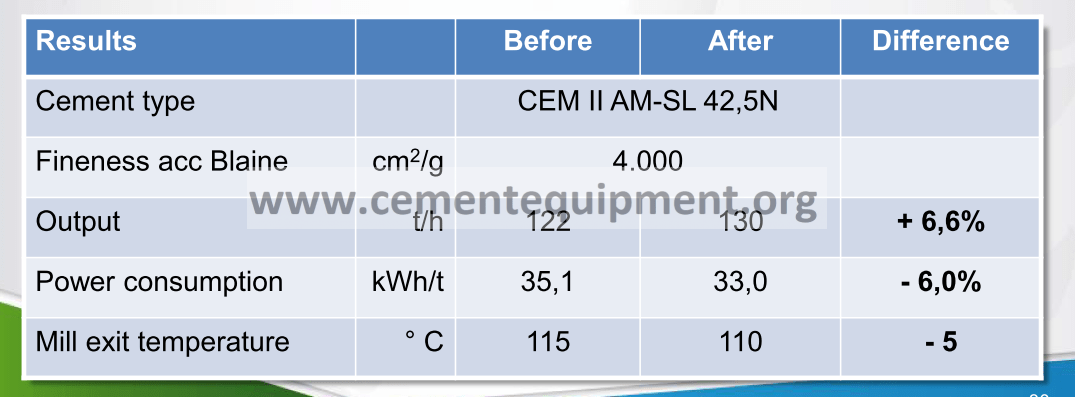
Case Example 2 Plant name (Country) Cement mill type Scope of modifications
Complete mill internals upgrade (2012) Heidelberg Cement (Romania)
2 compartment closed circuit mill, Ø 4,2 x 10,77 m 1st & 2nd comp. lining + flow control intermediate diaphragm
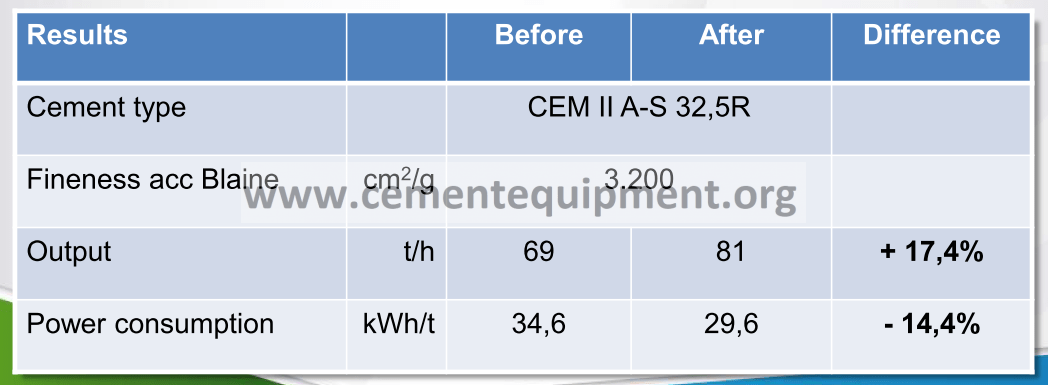

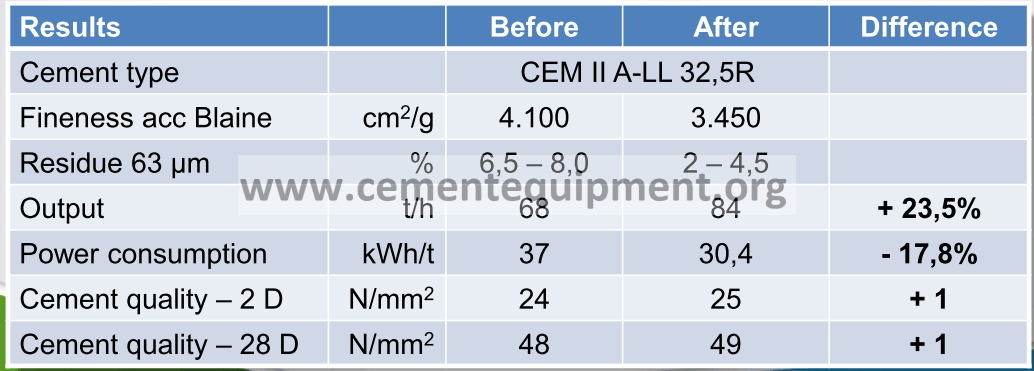

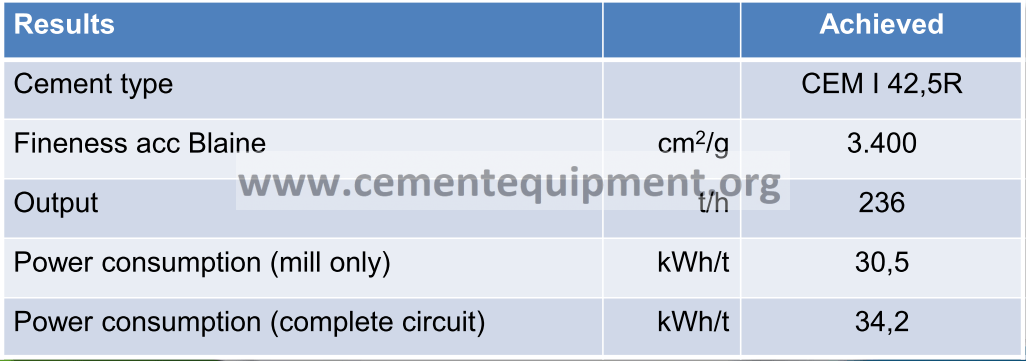
CPB ball mill system versus typical ball mill systems and vertical roller mills
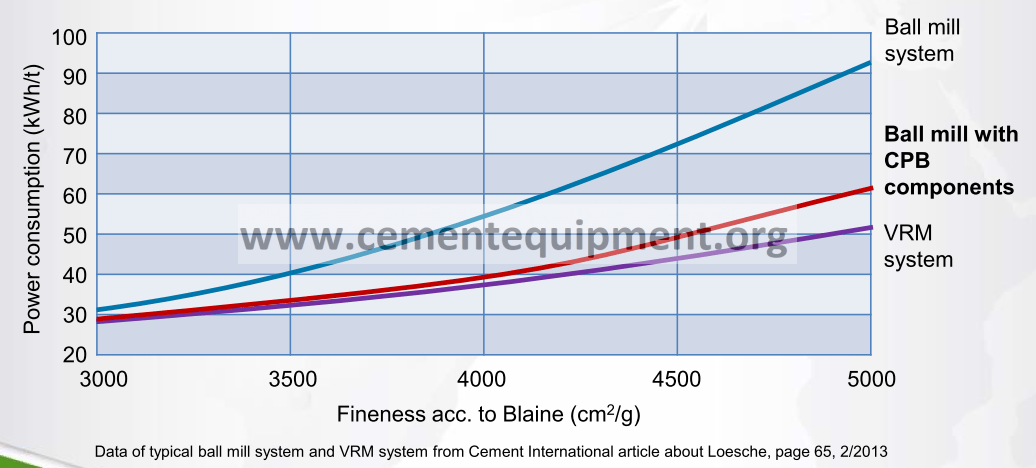
Conclusions
1. Of the 4 main mill systems in use for cement grinding, ball mills are by far the predominant, despite a higher energy consumption compared with a stand-alone Vertical Roller Mill or Roller Press;
2. Beside historical reason, ball mills are generally more reliable, simpler to operate & maintain, the wear parts readily available & stocking cost lower, the investment cost lower, and the cement quality more widely accepted by the market, especially for the industrial users;
CLICK HERE NOW TO DOWNLOAD MOST IMPORTANT BOOKS IN CEMENT INDUSTRY + PRACTICAL EXCEL SHEETS TO HELP YOU IN YOUR DAILY WORK